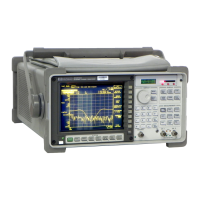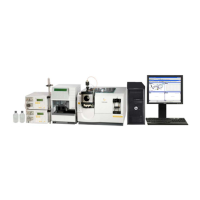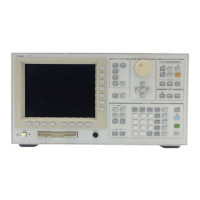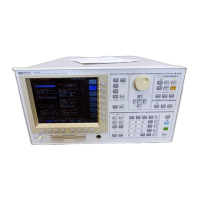3 Specify the measurement parameters.
Press [
Freq
][
MAX ORDER
] <number> [
ORDERS
] to specify the maximum number of
orders you want to measure.
Press [
MIN RPM
] <number> [
RPM
], then press [
MAX RPM
] <number> [
RPM
]tospecify
the range of frequencies over which you will measure.
Press [
DELTA ORDER
] <number> [
ORDERS
] to specify the resolution of your X-axis.
Press [
Input
].
For each active channel, press [
CHANNEL 1 2
] (or [
CHANNEL 1 2 3 4
]) to highlight its
channel number, then press [
CHANNEL x RANGE
] <number> <unit>.
4 Press [
Scale
], then press [
AUTOSCALE ON OFF
] to highlight OFF and press it again to
highlight ON.
5 Turn on the DUT, then press [
Start
].
Input channels do not autorange when an order mode measurement is running. As a
result, you must set ranges carefully to ensure that they are not exceeded during the
measurement. You can use one of the following methods:
• Manually set each channel’s range to a value that slightly exceeds the maximum
signal level you anticipate. Step 3 tells you how to set the range manually.
• Pause the measurement, then select up-only autoranging for all channels while the
DUT is running. To do this, press [
Pause-Cont
], then press [
Input
]
[
ALL CHANNELS
][
CH* AUTO UP ONLY
]. (After the channels have autoranged, you
may want to select [
CH* FIXED RANGE
] to prevent spurious signals from increasing
the range setting.
If an input signal does exceed the range of the corresponding channel, an OVLD
message is displayed at the bottom of all affected traces. You should select a higher
range for the overloaded channel before you restart the measurement.
Agilent 35670A
Operator's Guide Measuring Rotating Machinery
1-11

